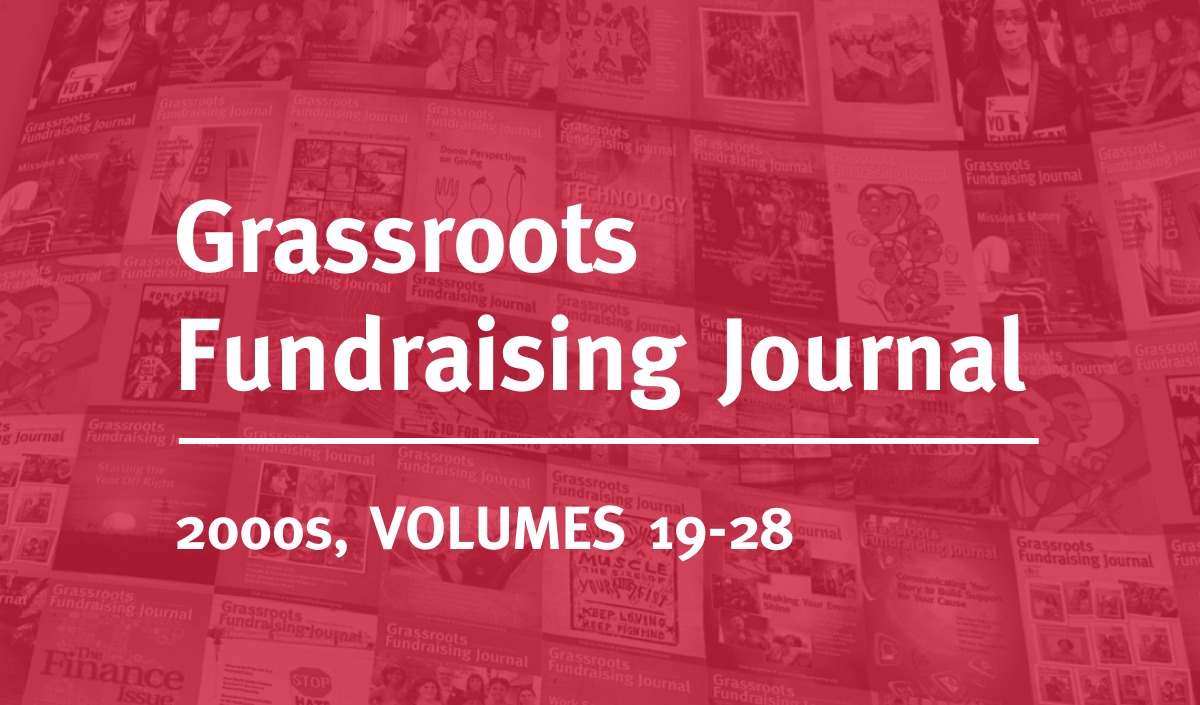Amidst all the celebratory dynamics of the Council's annual meeting, like any trade association gathering in truth, there were nuggets of real import in workshops and plenaries. Which foundations heard the reverberating critiques? Which took them to heart?
Gara LaMarche and Ralph Smith Put Philanthropy on Trial: Has the Foundation Sector Delivered Enough to Warrant its Tax Exemption? (April 12, 2011; 4:56 pm)
The trial of philanthropy, the sector charged with having not lived up to its mission to advance the common good, with a loss of its tax exempt status had there been a conviction, ended with a hung jury. It was marvelously entertaining, the Law and Order music, the extraordinarily witty and articulate prosecutor (Gara LaMarche of Atlantic Philanthropies) and defense attorney (Ralph Smith of the Annie E. Casey Foundation), the randomly selected conference attendees drafted for jury duty. Both philanthropic attorneys demonstrated an ability to deliver a speech, a lost art in American public life if there ever was one.
But serious issues were on the docket, and both LaMarche and Smith handled them with skill knowledge.
LaMarche attacked the rampant self-interest of foundations, willing to call for other sector to report on the diversity of their staff and but not foundations', willing to express concern about financing health care reform but publicly vowed to fight President Obama's suggested cap on charitable deductions on incomes over $250,000 (even though the impacts on philanthropy and on charitable giving overall would be minimal. Smith suggested that perhaps defending the unrestricted deduction was like defending the mortgage interest deduction, a statement of belief in philanthropy like a statement of belief in homeownership.
LaMarche challenged the insufficient proportion of philanthropic grantmaking going to social change and advocacy, citing statistics from both NCRP and the Foundation Center to make his case. Smith's cataloguing of “the greatest hits of foundations” beginning with the oft-cited foundation support for “Sesame Street” doesn't absolve philanthropy of its social justice shortcomings.
Smith was hard-pressed to find a compelling defense against the charge that philanthropy has yet to do much toward making itself more diverse and more reflective of the communities foundations serve. He suggested that philanthropy looks different—as in more diverse—now than it did in years past. At its core, he said, foundations were trying to be better even though they, like all other sectors in our society, suffered from human frailties and flaws.
Even though the majority of the jury and probably the audience were more taken by LaMarche's critique than Smith's defense, it's hard to imagine anyone there who voted “guilty” choosing, like a pro golfer penalizing themselves for self-called penalties, to voluntarily renounce their institutions' tax exemption because of their individual or collective shortcomings. In response to the challenge of who has the right to question whether the content of philanthropy merits a tax exemption, LaMarche noted that philanthropy is a creation of the tax law. Society has a right to examine and recalibrate those decisions from time to time. Perhaps, as Smith and LaMarche demonstrated, individual foundations ought to take the time to ask themselves, have we done enough to warrant our tax exemption.
Sign up for our free newsletters
Subscribe to NPQ's newsletters to have our top stories delivered directly to your inbox.
By signing up, you agree to our privacy policy and terms of use, and to receive messages from NPQ and our partners.
Speaking about Race in Foundations: Getting Past the Conscious into the Unconscious (posted April 13, 2011; 3:46 pm)
Speaking about race is uncomfortable and perplexing for many people inside philanthropy. Lori Villarosa of the Philanthropic Initiative on Racial Equity (http://www.racialequity.org) designed a workshop that contained more information and more depth than anyone might have expected and got at issues that few in philanthropic gatherings ever get close to. As Villarosa noted in her opening remarks, this was not going to be "Diversity 101, " and thank goodness for that.
From the Kirwan Institute at Ohio State (kirwaninstitute.org), john powell addressed what people hear and incorporate in their conscious and unconscious minds, noting that “racial bias resides in the unconscious” (when people say that they aren't racist, “they may not be talking about their unconscious thinking that is organizing around race”).
So how do you connect to the unconscious to change unconscious racial thinking? “The unconscious mind couldn't give a hoot about facts, but likes stories,” powell said, so don't lead with data. The “do's” on his list include, talking about peoples values, creating empathetic space (not dividing people into us and them), and being solution-oriented.
What would be “solutions” in this framework? You can't talk about “universal” solutions, according to powell, because they end up being universal in terms of strategy, but not in goals. He called for “targeted universalism,” being universal in our goals (such as jobs for everyone), but “targeted in our parthways and strategies” to situate populations that are otherwise isolated to more fully participate in the benefits from universal solutions (jobs, health care, etc., when the programs might not get to populations in need).
With a journalist's sensitivities, Rinku Sen of the Applied Research Center and Colorlines (http://www.colorlines.com/) addressed the ways of approaching stories if it is true that leading with data doesn't work. She suggested it is a matter of how you tell the story—and not about data per se, but how you position data in your story. The elements of a story that connects with audiences (and their unconscious networks and beliefs) are character, setting, and movement through time (plot). It means, like anti-racism work, working on four levels of racism—individual, interpersonal, institutional, and structural—simultaneously, not chonologically or sequentially. Key is the focus on racial impact since there is little way of ever really determining what intention might be.
As an example of the story-telling narrative, Sen used the Restaurant Opportunity Center in New York City, with the following elements: the restaurant industry is a great industry with good jobs and profit potential, etc.; but highly qualified people are shut off from those benefits due to race and gender; data from campaign research, interviews with employers, and matched pair testing help make the case; the result is a system of discrimination in which the most qualified people are shut out, hurting the industry, the workers, and the diners/consumers; and there is urge to take the high road to make the restaurant industry better for everyone involved. is the kind of sophisticated story-telling that can engage the unconscious as well as the conscious.
Countering that we need stories, but not 5,000 of them, powell said that we need consistency and coherence among our stories. The racial justice movement needs to be more sophisticated in its story-telling to engage the unconscious as well as engaging structures and institutions.
What does all of this say to foundations? In terms of the current foundation focus on diversity,Sen and powell reminded everyone to make the distinction between “simple diversity” of people in the room and equity in which everyone has a chance to shape the agenda. “Diversity can't be the end product,” they said. This is particularly important for social justice funders who typically focus on the impacts of policies (and for funders, of their grants and programs) and not on the process of the design of policies.
But funders don't talk about race, particularly when it comes to themselves, as Gara LaMarche made abundantly clear in his “j'accuse” statement in the trial of philanthropy at the end of the conference. Is it an inability to see themselves as part of the process of what powell called “structural racialization?” Sen suggested that foundations need talking points, a few clear ones that would help them (actually their staff people) organize their thinking and analysis around these issues. But will the talking points only connect with the two percent of their brains that are the “conscious” and miss the 98 percent that is the unconscious where individual, interpersonal, institutional, and structural attitudes and approaches toward race survive and thrive in contrast and often contradiction to the conscious mind?












